Sodium lamps: varieties, technical parameters, scope + rules of choice
Economical sodium lamps are a practical source of light for large spaces where the main task is not color accuracy, but economical, saturated, highly efficient and bright full-fledged radiation.
The modules are reliable, not too demanding on environmental conditions and operationally stable. With their help, you can reduce energy costs without sacrificing the quality and density of the outgoing light flow.
However, in order for the lamps to cope with their task as efficiently as possible, they must be correctly selected in accordance with the intended conditions of use. In order not to get confused in the variety, we suggest that you familiarize yourself with the classification of sodium aggregates, find out their pros and cons, scope and rules of choice.
The content of the article:
General Description of Lighting
Sodium products are advanced, modern and economical equipment. The main working element in them are sodium vapor.
Design features of modules
The whole process takes place in a special tube-burner of a cylindrical shape, consisting of aluminum oxide.
Radiation elements are housed in a durable glass bottle equipped with the most popular threaded caps E27 or E40.
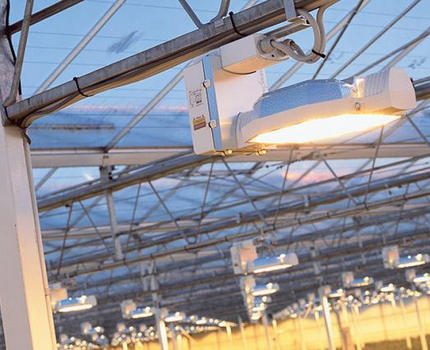
The resonant radiation generated in the process has a specific yellow-orange color, called monochromatic.
This means that, despite the brightness, density and saturation, the light flux does not provide good color reproduction.
In addition, being at the doubled frequency of the supply network, the modules flicker significantly, which makes them absolutely unsuitable for lighting residential premises.

Sodium light sources consist of a heat-resistant elliptical or cylindrical glass bulb. Inside is a working aluminum burner, equipped on both sides with electrodes.
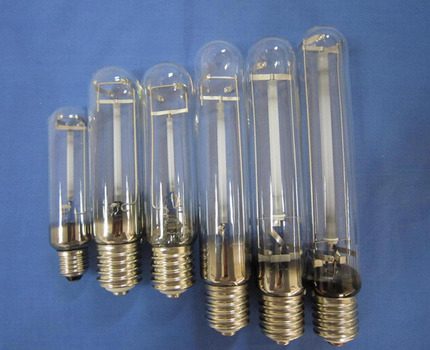
This material has high physical characteristics, has good operational stability.
Correctly interacts with sodium vapor and has the unique ability to transmit about 90% of the generated light energy without being destroyed.
In addition to sodium compounds, mercury and argon are located inside the discharge tube.
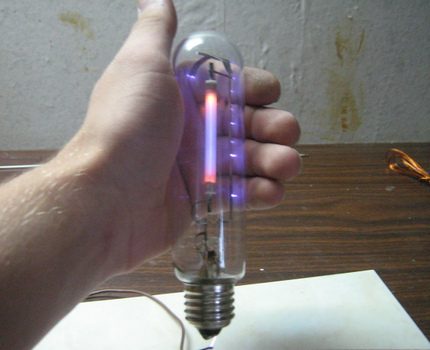
The flask is equipped with special gaskets. They take care to maintain a vacuum in the interior of the light bulb and prevent oxygen from entering the burner.
This increases the level of operational safety of devices, since during operation, the discharge tube is highly heated and reaches almost fantastic values of 1300 ° C.
In this case, the ingress of even a very small amount of air can destroy the integrity of the module and provoke a situation dangerous for nearby people.
The principle of operation of products
The principle of the sodium device is based on arc discharges. As a result of the pulse voltage generated in the inner tube, they create a saturated visible glow.

In sodium vapors, which are responsible for the formation of a gas-discharge medium inside the flask, red spectral luminescence prevails.
Due to this feature, lamp units create outgoing light of such shades as:
- yellow;
- Orange;
- red in a wide variety of shades.
Immediately after activation, sodium devices burn weakly and dimly, because the bulk of energy is spent on high-quality heating of the working burner.
The light flow acquires the necessary brightness, saturation and strength only after 5-10 minutes, when the temperature of the internal burner reaches the level necessary for the correct operation.
Device Launcher Nuances
All sodium type products need a starter system. It is intended for optimal ignition and convenient flow control. Now on the market are two types of ballasts.
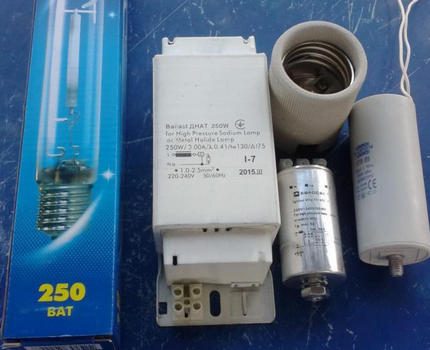
Option number 1. This is a ballast assembly designed for operation at a voltage level of 220 V. It has a simplified design, is sold at a reasonable price and belongs to the budget options for related equipment.
Option number 2. This is a more modern, progressive electronic electronic ballast, which does not have an ignition device in its design.
It stabilizes power, significantly increases the efficiency of light output, eliminates flicker unpleasant for the eyes, and extends the life of a sodium device.

The only minus of the product is a higher price than the PRA. However, experts say that the electronic device pays off quickly and significantly improves the comfort of controlling the lighting system.
Classification of sodium aggregates
According to the main classification, lamps differ in terms of the level of internal partial pressure of sodium vapor.
Products with low performance are called low pressure modules (NLND). Instruments showing large numbers are high pressure devices.
Each category has its pros and cons. Focusing on them, the user can easily choose for himself the most successful and optimal lighting device in terms of parameters.
Distinctive features of low pressure modules
Low-pressure products (NLND) have several specific features that distinguish them from the assortment line of similar devices.
They are completed not with a simple glass flask, but with a high-strength borosilicate. This is due to the aggressive effect of sodium vapor on glass surfaces.
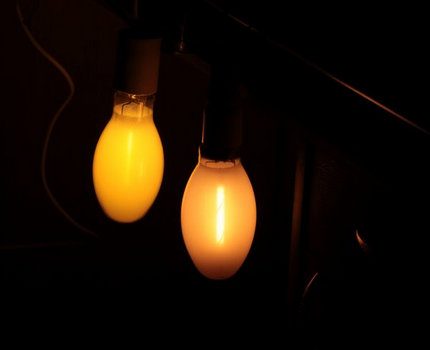
The effective operation of NLND is directly dependent on the ambient temperature. Therefore, to ensure optimal operating conditions, the bulb is placed in an external glass bulb that acts as a kind of thermos and protects the light source from negative influences.
What makes high pressure lamps interesting?
High pressure sodium modules (NLVD) are known for better color rendering and phenomenal efficiency. Their light output at a power of 30-1000 W reaches 160 lm / W, and the service life often exceeds 25,000 hours.
Due to the compact size of the luminous body and the unprecedented brightness of the emitted light flux, the field of application of the products is very wide.
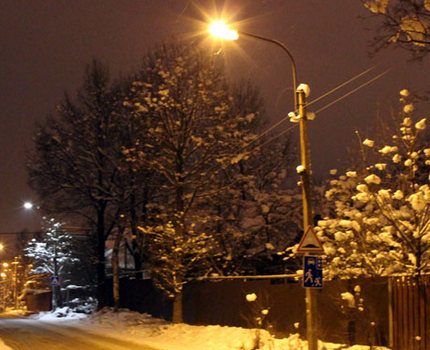
The products are necessarily operated with ballast of inductive or electronic type. Ignition is carried out using a special device (IZU), providing the supply of pulses up to 6 kW.
From the moment of activation to the emergence of full-fledged light of the necessary brightness, 3 to 5 minutes pass.
Device Nomenclature
The generally accepted domestic nomenclature of lighting sources distinguishes four types of sodium devices. They are available in various versions and are intended for specific tasks. To understand where to use this or that type of lamp, you need to know about their distinguishing features.
What are DNaT?
DNaT are arc tubular modules with a screw base and a bulb made of transparent quartz glass. They have a cylindrical shape and differ from analogues in a wide range of capacities.
They demonstrate a good level of efficiency and are included in the category of economical light sources.
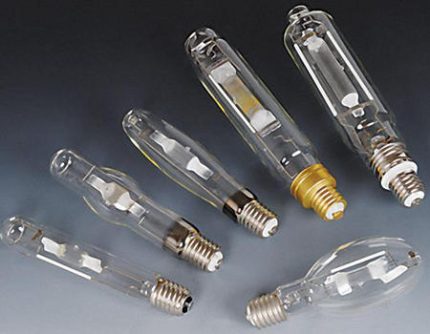
Products provide high-quality street lighting with pronounced contrast visibility in various weather conditions.
Suitable for location on intercity trunk routes, in tunnels, at aerodromes, etc. They show excellent results when used in greenhouses, greenhouses and greenhouses.

DNaMT have the same parameters, but are available in ellipsoid shape and are equipped with a frosted glass bulb to create a softer diffused lighting.
How do DNaZ function
DNAZ are a light source equipped with a bulb with a built-in reflector made of mirror aluminum film, hermetically located on the inner walls of the device. They are made in the shape of an ellipse and equipped with a classic screw base.
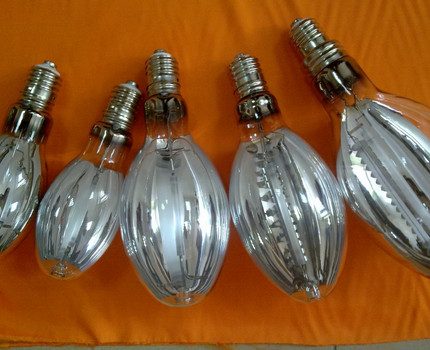
The most widely used in the agricultural industry. Successfully imitate natural light and provide active growth and development of vegetable and ornamental crops growing in greenhouses.
What is the difference between DNaS
DNAC from all other lamps differ in the presence on the inner surface of the flask of a coating of light-scattering substance. This technical solution allows the module to be used to directly replace obsolete and environmentally hazardous gas-discharge mercury lamps.
DNaS modules are most widely used in research laboratories, in the field of medicine, chemical industry and other related industries.
The main advantages of sodium aggregates
For sodium-type light sources, the following characteristics are the most interesting, important, and noteworthy:
- unprecedented high light output - up to 150 lm / W for high pressure modules and about 200 lm / W for low pressure lamps;
- long operating period - from 12,000 to 32,000 hours without loss of quality and saturation of light flux;
- profitability of work - a reduction in basic energy consumption and a 1.5–2-fold reduction in the cost of servicing a lighting installation;
- wide range of operating temperatures - the products function absolutely correctly in the interval from -60 ° C to + 40 ° C.
Sodium light sources are twice as efficient as conventional day lamps with similar power.
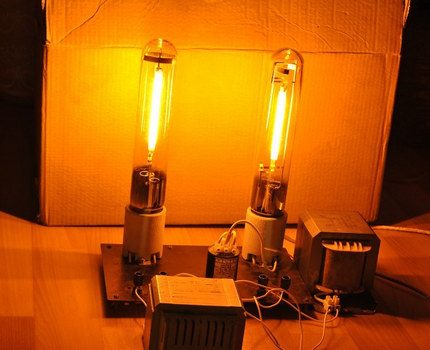
This is due to the design features of the products and a compact small emitter, capable of very easily and without delay directing light rays in the necessary directions.
The main disadvantages of the product
In addition to an impressive list of pluses and positive qualities, sodium light sources have several specific features with a minus sign.
Among them stand out such positions as:
- specific color range, changing in the process of continuous operation - does not allow the use of modules in rooms where high requirements regarding color rendering are established;
- weather dependent quality and saturation of the light flux - when the temperature is cold, the radiation noticeably deteriorates and loses its intensity;
- high sensitivity to power supply parameters - in case of severe systemic fluctuations, it is undesirable to use devices; operation is permissible only in networks with even voltage, where only occasionally slight fluctuations are observed;
- need for additional security features - during combustion, a leak of sodium atoms is formed, and in order to avoid this, a single-crystal discharge tube is used together with the lamp;
- initial ignition time - when activated, the lamp does not light up immediately and gives out a stable light flow only after 6-10 minutes;
- problematic connection and subsequent maintenance of ballasts, which are impressive in size and subject to loss of up to 60% of power;
- ripple of light with a network frequency of 50 Hz;
- steady increase in power consumption throughout the entire life cycle - sometimes the indicators exceed the primary figures by 35-40%.
Given all these points, experts do not recommend the use of lamps for domestic lighting systems. At home, sodium sources of light simply cannot manifest themselves properly.
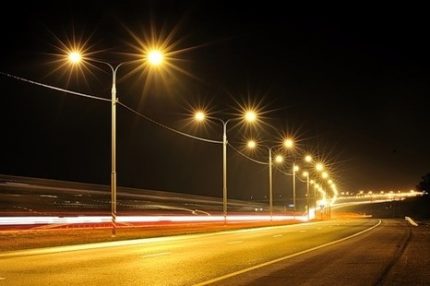
But where economical, powerful, saturated light is required without claims to a clear and correct color rendering, the modules will work on the top five and will perfectly cope with the tasks.
Danger to humans and the atmosphere
Since sodium light sources, due to their low color rendering, are not used in rooms where people spend a lot of time, they do not have too much negative impact on human health.
However, they cannot be called completely safe and environmentally friendly due to toxic mercury that is part of the composition.

It is strictly forbidden to throw out used products into garbage containers. In case of violation of the integrity of the flask, mercury enters the surrounding space, creating toxic fumes around it, 20 times exceeding permissible safe norms.
The rules for the disposal of sodium lamas are the same as for fluorescent lamps, for more details, see this article.
Scope of devices
Weak color rendering accuracy does not allow the use of sodium modules in residential premises, but for the street this parameter is practically irrelevant, therefore NLs are used there most often.
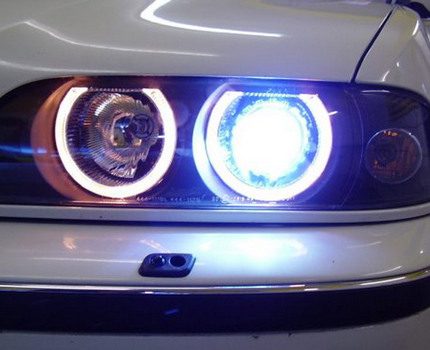
Using NL, they create economical and highly efficient systems for lighting large areas, avenues, highways and suburban highways.
NL is placed in devices designed for background lighting and backlighting:
- tunnels, sports facilities and container sites;
- historical monuments and architectural structures;
- airports, train stations and other places where people do not spend a lot of time;
- workshops, production and storage facilities, where the quality of color reproduction does not show any complaints;
- in greenhouses, conservatories and greenhouses to increase the growth rate and basic productivity of plants, ornamental flowers, vegetables and berries.
In all of the above listed electrical systems, NL work efficiently and provide the proper level of illumination, with minimal energy consumption.
How to choose the right light source
Poor color rendering quality and strong flicker make sodium modules unsuitable for domestic use and continuous lighting of residential premises.
But this is not a reason to abandon the use of such economical and efficient light sources in other areas.
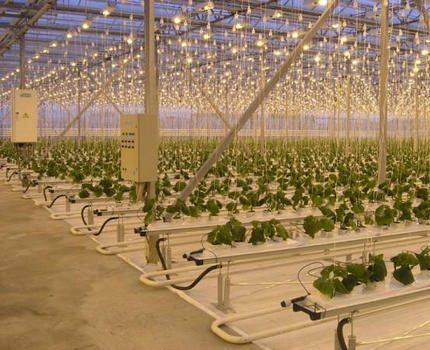
You just need to clearly define the tasks that you want to solve and specifically for them to choose the most successful light source.
If you need to create a lighting system in a greenhouse or greenhouse, where various vegetable crops, greens, berries, ornamental plants and flowers are grown, it is worth giving preference to high-pressure products with the marking DNAZ.
They have a 95 percent reflective coefficient and keep these parameters at the proper level throughout the entire operational period.
The luminous flux of the lamps is directed not only downward, as, for example, for DNaT modules, but is distributed longitudinally.
This makes it possible to embed sodium products directly in the center of the rack, window sill or table, from where they can scatter light both along the row and in both directions around.

Simple DNLs perform well in greenhouses with minimal access to sunlight. They provide vital blue and red spectral luminescence for plants, accelerating growth, development, fruiting and flowering.
When it is required to efficiently illuminate the thoroughfares and increase their safety during difficult weather conditions such as heavy fog or snowfall, it is worth paying attention to the classic low-pressure DNT.
They consume resources economically, have a long service life of up to 32,000 hours and give a rich and bright light flux of up to 200 lm / W.
Information on the nuances of choice, the best manufacturers of lamps for use in residential premises is given in the articles:
- Which bulbs are best for the home: which are + rules for choosing the best bulb
- Choosing energy-saving lamps: a comparative overview of 3 types of energy-efficient light bulbs
- Bulbs for suspended ceilings: rules for the selection and connection + layout of lamps on the ceiling
- Which LED lamps are better to choose: types, characteristics, choice + best models
Conclusions and useful video on the topic
What is a sodium-type lamp, how it works in different conditions, and how it differs from other light sources:
A detailed review of the sodium module from the German company Osram:
How to effectively illuminate plants in a greenhouse using sodium lighting products:
It is necessary to choose sodium devices in strict accordance with the field of use. It is better to purchase products of famous brands in a store where goods are stored in suitable conditions and are not exposed to aggressive environmental influences.
Such a lamp will last its entire life, will not require complicated maintenance procedures and will provide a dense, saturated light flux in any place convenient for the user.
Have experience using sodium lamps? Or want to ask questions on the topic? Please comment on the publication and participate in the discussions. The feedback block is located below.

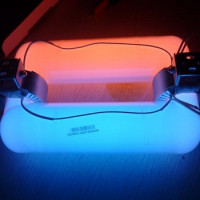 Induction lamps: device, types, scope + rules of choice
Induction lamps: device, types, scope + rules of choice 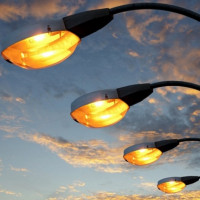 DRL lamps: device, characteristics, selection rules
DRL lamps: device, characteristics, selection rules 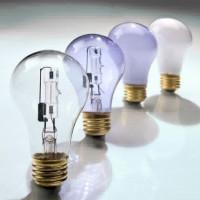 Halogen lamps: device, varieties, nuances of choice + review of the best manufacturers
Halogen lamps: device, varieties, nuances of choice + review of the best manufacturers 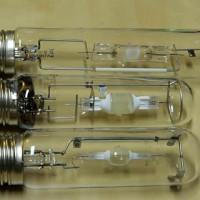 Metal halide lamps: types, device, pros and cons + selection rules
Metal halide lamps: types, device, pros and cons + selection rules  LED table lamps: types, selection rules + review of the best manufacturers
LED table lamps: types, selection rules + review of the best manufacturers 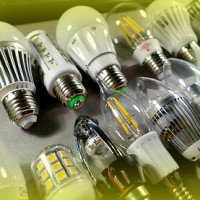 LED lamp bases: types, marking, technical parameters + how to choose the right one
LED lamp bases: types, marking, technical parameters + how to choose the right one  How much does it cost to connect gas to a private house: the price of organizing gas supply
How much does it cost to connect gas to a private house: the price of organizing gas supply  The best washing machines with dryer: model rating and customer tips
The best washing machines with dryer: model rating and customer tips  What is the color temperature of light and the nuances of choosing the temperature of the lamps to suit your needs
What is the color temperature of light and the nuances of choosing the temperature of the lamps to suit your needs  Replacement of a geyser in an apartment: replacement paperwork + basic norms and requirements
Replacement of a geyser in an apartment: replacement paperwork + basic norms and requirements
Competent technical solution. I drive past the refinery every night from work, so everything is literally studded with such lamps ... for the first time I found out that they are called sodium) Their efficiency for the house is probably not enough, but as a constant, economical source of light in production shops and buildings is an ideal option, better not to come up with. Fiction is informative.
I have a lot of decorative flowers at home. For flowers, I have a balcony that was glazed and insulated. But many of the plants are photophilous. In the summer they have enough sunlight.But in winter there is not enough light for them, especially since my apartment faces north. I began to think how to add lighting to them in the winter season. I learned about sodium lamps that are suitable for such purposes. She hired a craftsman who put electricity on the balcony and installed sodium light bulbs there.
By the way, in addition to brightness and high efficiency, sodium lamps have a spectrum that perfectly suits most plants. For illumination of greenhouses and conservatories, until recently and the advent of LED phyto-lamps, this was the best option. The spectrum of DNaT and DNaZ most closely corresponds to the areas of daylight absorbed by chlorophyll. We use such lamps in the country.